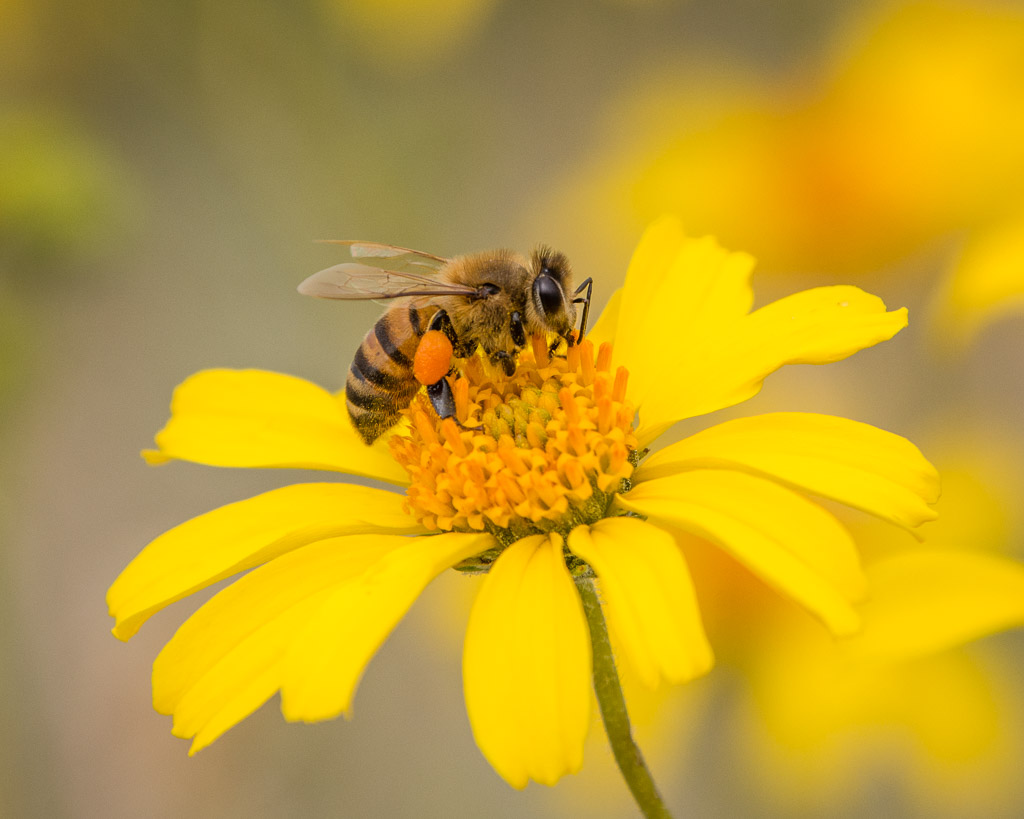Hello everyone,
Today we're talking about pollination and its importance in the world's ecosystems.
First a bit of basic plant biology. To reproduce most plants do have a differentiation into male and female, but not in the same way that we see in mammals. Both male and female reproductive organs can be found on the same plant, although not in the same place. Male gametes are produced in the stamens and are then found in pollen. On the other hand, female reproductive organs are called pistils and egg cells are found in the ovule (normally in the flower heads). Pollination describes the process of transporting the pollen to the egg cells, making it an essential part of the reproduction of plants. Nearly all seed plants worldwide require pollination to reproduce. Cone bearing trees also need pollination.
Pollination is almost always assisted by other organisms such as insects, birds and mammals to transport the pollen. In some species wind and water also does this. The pollen, a yellow dust, is found in the flower and attaches itself to the insect or bird to be carried to the next flower where it rubs off and fertilises the egg cell. To attract more insects, especially bees and butterflies, flowering plants have evolved to be more enticing for these insects. They do this with bright colours, pleasant odours and sugary nectar. They also evolved a different shape to make extracting the nectar take as long as possible, keeping the insect on the flower for longer and increasing the chance of pollen getting caught in the fine hairs found on the bodies of many bees and other insects. The insects then evolved to specialise in extracting nectar. Many species are now mutually dependent: the plants need the insects for pollination, the insects need the plants as their source of nectar.
There are two types of pollination. Self-pollination (autogamy) refers to the pollen coming from the same individual plant as the egg. This form works brilliantly in a stabile unchanging environment, as only one individual plant is needed. However it leads to a much smaller genetic variability (as both pollen and egg cells have the same DNA). In a changing environment, this is problematic because evolution requires genetic variability. So self-pollination is unfavourable for the plant. Cross-pollination (heterogamy) refers to the pollen coming from a different individual plant as the egg. This is an evolutionary advantage as the gene pool is significantly larger. Therefore many plants try to stop self-pollination from happening. There are a couple different ways to do this. A dioecious species is a species where some individuals only have staminate flowers (produces the male gametes in pollen) and some individuals only have pistillate flowers (containing a single egg cell). In this way self-pollination is entirely impossible and another individual is required. Some examples of this are certain date palms and willows. Dichogamy refers to both staminate and pistillate flowers being on the same individual plant, however they are fertile at different times; for example, all the staminate flowers will be fertile simultaneously, whereas the pistillate flowers will only become fertile once the staminate flowers are no longer fertile. So the fertility windows don't overlap. Finally, some plants have chemical self-incompatibility which means that even if the pollen reaches the egg of the same individual qafertilisation is chemically not possible.
So what does pollination even do and what does it mean for the wider ecosystem? Pollination is responsible for fruit and seed production. It is vital for the plant kingdom, which then provides oxygen for the animal kingdom and also buffers against climate change. It is essential for the reproduction, population stability, genetic variability and fruit production of plants. Plants are the base of almost every food web on earth. Almost 80% of human grown crops worldwide depend on pollination, meaning that it's valued at 3 trillion dollars worldwide. Flowering plants also purify water and prevent erosion. Studies have shown that pollination by more than one bee species increases cherry harvest and while the reasons for this are still unclear it could help improve farm yields in the future as the team behind the research look into whether this applies to other plant species. Unfortunately climate change, pesticides, and intensive land use has lead to a decline in pollinator species. This is most prominent in already struggling regions of sub saharan Africa. Coffee and cocoa production is considered vulnerable, with prices possibly rising drastically in coming years.
We hope you enjoyed this post. See you next week!
Your Green World Blog Team💚
Sources:



interesting text
ReplyDelete